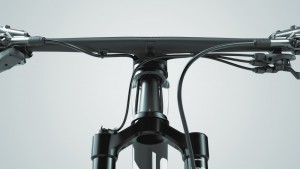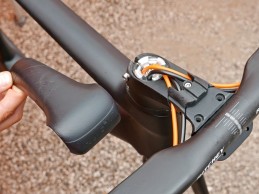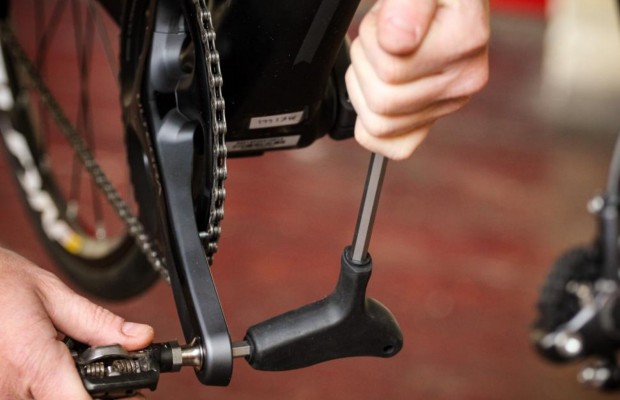Internal cable routing from the handlebars: the pros and cons of an unstoppable trend
Integration and internal cable routing in bicycles is one of the strongest trends in cycling in recent years. Under the promise of better aerodynamics and wattage savings, at first we only saw it on the more expensive aero road bikes, but nowadays we can even find it on mountain bikes. What are the advantages and disadvantages of internal wiring from the handlebars?
Internal cabling and bicycle integration: advantages and disadvantages
The safety warning issued by Specialized on its Tarmac SL7 is already well behind us and everything seems to be solved for that model, but at the time it set off all the alarms. In it, the brand requested that some units of the latest model be removed from use due to the detection of a possible problem in the head tube, and pointed to the compression ring through which the cables of the new integration system are routed as the source of the problem.

That case, along with a similar one suffered by BMC, made many fans wonder if the new internal cable routing and "extreme" integration systems are really safe and reliable, and the first thing we have to say is that they are.
RECOMENDADO
Both cases cited were typical of new systems and cutting-edge technologies in the industry, the brands were able to anticipate problems with a very low probability of happening and they were solved quickly and easily.

But leaving these specific cases aside, let's take a look at why integration and internal cabling from the handlebars has become so popular, what the advantages are and what the disadvantages are.
Starting with its origins, cabling inside the frame from the handlebars was born more out of a need for performance than aesthetics, and it was the top-of-the-range time trial and aero bikes that first included it to shave a few seconds off the clock. Some of the bikes that contributed the most to its visibility were the Trek Madone or the 2016 Specialized Venge Vias. But the aesthetic result convinced everyone and soon it was the users who demanded this system in the new models as a synonym of modernity, even for bikes in which its benefits were going to be practically insignificant.

With the cable routing technology in their catalogue and users demanding it, some brands simply decided to apply it to their other models, like SCOTT who have used the same cable integration system from the handlebars that they developed for their Aero SCOTT Foil model on the new SCOTT Spark 2022 MTB.

Knowing its origin, we will try to list the real advantages and disadvantages of internal cable routing and integration.
Advantages of integration and internal cable routing
Aerodynamics? It all started as a matter of aerodynamics since round cables generate a lot of turbulence that is avoided if those cables simply disappear. This is one of the marginal benefits sought in competition and actually the internal cable routing from the handlebars achieves it. But with this complex system, we are talking about a saving of 3 watts on the road. It's certainly an advantage when looking for maximum performance, but it doesn't seem like a strong reason for most riders or on mid-range or low-end bikes.
Lighter bicycles. These new integration systems, however, provide a more homogeneous benefit than aerodynamics: they reduce the weight of the bicycle frames. We have seen this on the Spark 2022. The entry holes needed in the frame to route the cables create structurally weak areas that need more carbon to reinforce them, but when the cables are routed from the headset that extra carbon can be saved and the frame can be lightened with the same stiffness and strength.

Protection. This is another of the advantages that are pointed out as such, but a little further down we will see that it may not be so much. The truth is that the internal routing theoretically protects the cables, sheaths and hoses from dust, water, mud, etc. and therefore will improve their performance for a longer period of time.

Aesthetics. There is a consensus here. The clean lines of fully integrated bikes with internal cable routing from the handlebars are trendy. This system has brought a new aesthetic that is now associated with modern bikes, regardless of range or discipline, and is the main reason why the absence of cables is more fashionable than ever. In fact, one of the criticisms of the new Specialized CruX, the world's lightest gravel bike, is that it has not received an integrated cable routing system from the handlebars. And this is a bike where it doesn't make much sense in terms of performance.
Disadvantages of internal cable routing
Complexity. Riders love to see a bike completely clear of cables, but mechanics should be asked what they think of these new systems. The integration of all the wiring through the handlebars has made maintenance and replacement tasks that were once very simple quite complicated. Steerer tubes have become matryoshkas and it is now convenient to have the manual for each model close at hand when disassembling it.

Adjustment and feel. Continuing with the complexity of maintenance, we cannot ignore the fact that in mechanical cable shifters this integration system forces the cables to have very tight turns that can affect the feel and, of course, the adjustment, which becomes more complicated.
Hidden attrition. Finally, we can say that the increased protection of internal wiring can be turned against you if the system is not checked regularly. It is true that the cables are more protected, but we all know that water and rust manage to get into the most hidden areas if left long enough.
There is no doubt that in this case aesthetics is the differentiating element in the new integration systems and it looks like it is here to stay.





